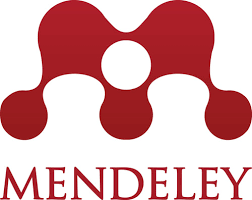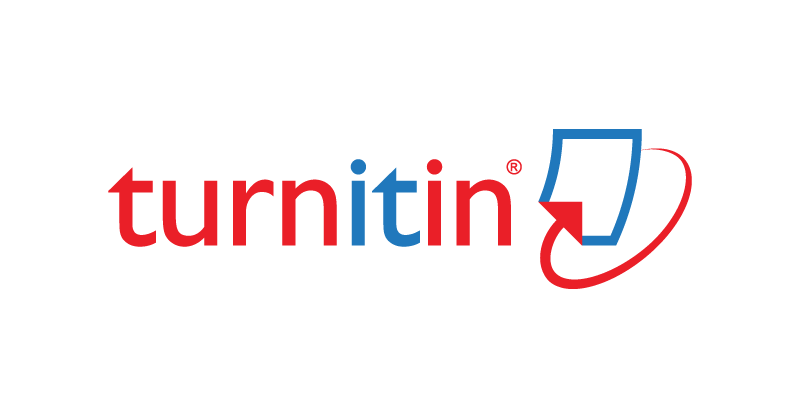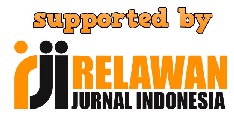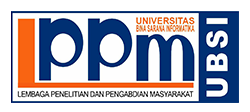Exploration of Enterprise Risk: An Analysis of Financial Leverage, Intangible Assets, and Earnings Management Practices.
Abstract
Full Text:
PDFReferences
Akmalia, A. (2020). Pengaruh Struktur Modal, Struktur Aset Dan Profitabilitas Terhadap Potensi Terjadinya Financial Distress Perusahaan (Studi pada Perusahaan Manufaktur Sektor Aneka Industri yang Terdaftar di Bursa Efek Indonesia periode 2014-2017). Business Management Analysis Journal (BMAJ), 3(1), 1–21. https://doi.org/10.24176/bmaj.v3i1.4613
Apriadi, R., Angelina, R. P., Firmansyah, A., & Trisnawati, E. (2022). Manajemen Laba Dan Karakteristik Perusahaan Sektor Barang Konsumsi Di Indonesia. Jurnal Pajak Dan Keuangan Negara (PKN), 3(2), 305–315. https://doi.org/10.31092/jpkn.v3i2.1532
Busines_Indonesia. (2023). Indonesia maintains steady expansion of its manufacturing sector.
C
alvo-Pardo, H. F., Mancini, T., & Olmo, J. (2020). Neural Network Models for Empirical Finance †. Journal of Risk and Financial Management, 13(11). https://doi.org/10.3390/jrfm13110265
Gautama, B. P., & Ruhadi, R. (2021). Pengujian Dampak Leverage Terhadap Risiko Sistematik Perusahaan (Studi pada Bank Syariah di Bursa Efek Indonesia). Image : Jurnal Riset Manajemen, 9(2), 111–124. https://doi.org/10.17509/image.v9i2.28759
Gunarathna, V. (2016). How does Financial Leverage Affect Financial Risk? An Empirical Study in Sri Lanka. AJF ADMAA Amity Journal of Finance, 1(1), 57–66.
Hasan, M. M., & Cheung, A. (Wai K. (2023). Organization capital and firm risks. China Accounting and Finance Review, 25(3), 338–367. https://doi.org/10.1108/cafr-05-2022-0044
Istiqomah, Apit, W., & Astuti, A. D. (2023). Pengaruh profitabilitas, leverage , dan kepemilikan publik terhadap pengungkapan manajemen risiko. Medikonis, 14(1), 52–65. https://tambara.e-journal.id/medikonis/article/view/78
Jeong, S. H., & Harrison, D. A. (2017). Glass breaking, strategy making, and value creating: Meta-analytic outcomes of women as ceos and tmt members. Academy of Management Journal, 60(4), 1219–1252. https://doi.org/10.5465/amj.2014.0716
Lahfah, A. A., & Rahayu, S. (2023). Pengaruh Komite Manajemen Risiko, Leverage, dan Umur Perusahaan Terhadap Pengungkapan Enterprise Risk Management (Studi pada Perusahaan Subsektor Perbankan yang Terdaftar di Bursa Efek Indonesia Tahun 2018-2021). Ekonomis: Journal of Economics and Business, 7(2), 1086. https://doi.org/10.33087/ekonomis.v7i2.1338
Lev, B., & Gu, F. (2016). The End of Accounting and the Path Forward for Investors and Managers. Wiley. https://doi.org/10.1002/9781119270041
Lugina, E. J., Mwakalobo, A. B. S., & Lwesya, F. (2022). Effects of industrialization on Tanzania’s economic growth: a case of manufacturing sector. Future Business Journal, 8(1), 62. https://doi.org/10.1186/s43093-022-00177-x
M. Aria Gymnastiar, Muhammad Nur Fauzi, & Zikratul Ramadhan. (2023). Pengaruh Intangible Asset dan Leverage Terhadap Nilai Perusahaan. GEMILANG: Jurnal Manajemen Dan Akuntansi, 3(3), 15–24. https://doi.org/10.56910/gemilang.v3i3.598
Sarwono, A. A., Hapsari, D. W., & Nurbaiti, A. (2018). Pengaruh Profitabilitas, Leverage dan Ukuran Perusahaan Terhadap Pengungkapan Manajemen Risiko (Studi Kasus pada Perusahaan Sektor Perbankan yang Terdaftar di Bursa Efek Indonesia Tahun 2012-2016). E-Proceeding of Management, 5(1), 769–777.
Saskara, I. P. W., & Budiasih, I. G. A. N. (2018). Pengaruh Leverage dan Profitabilitas pada Pengungkapan Manajemen Risiko. E-Jurnal Akuntansi, 1990. https://doi.org/10.24843/eja.2018.v24.i03.p13
Syafira, D. M., & Zainul, Z. R. (2021). Pengaruh Operating Leverage dan Financial Leverage terhadap Risiko Sistematis pada Perusahaan Infrastruktur, Utilitas, dan Transportasi yang Go Public di Bursa Efek Indonesia. Journal Akuntansi, 17(3), 539–548.
Syaifullah, A. (2018). Analisis pengaruh financial leverage dan operating leverage terhadap stock return. INOVASI, 14(2), 53. https://doi.org/10.29264/jinv.v14i2.1928
Taylor, M. Z. (2016). How Nations Succeed. In The Politics of Innovation (pp. 140–180). Oxford University Press. https://doi.org/10.1093/acprof:oso/9780190464127.003.0006
Umami, A. F. (2018). Pengaruh Faktor Keuangan terhadap Manajemen Laba dengan Good Corporate Governance sebagai Variabel Moderasi. Jurnal Akuntansi, 6(1), 1–15. http://dx.doi.org/10.1016/j.bpj.2015.06.056%0Ahttps://academic.oup.com/bioinformatics/article-abstract/34/13/2201/4852827%0Ainternal-pdf://semisupervised-3254828305/semisupervised.ppt%0Ahttp://dx.doi.org/10.1016/j.str.2013.02.005%0Ahttp://dx.doi.org/10.10
Wijaya, E., Asyik, N. F., & Budiyanto. (2022). Kajian Teoritis Capital Structure, Firm Size, Volatility, Tangibility, Uniqueness, dan Profitability. Cv. Irdh, 195.
Zelalem, B. A., & Abebe, A. A. (2022). Does intangible assets affect the financial performance and policy of commercial banks’ in the emerging market? PLoS ONE, 17(8 August). https://doi.org/10.1371/journal.pone.0272018
DOI: https://doi.org/10.31294/widyacipta.v9i1.12392
Copyright (c) 2025 Erna Sari, Hisar Sirait, Rizqy Aziz Basuki, Ratih Nur Setyaningsih, Rahmat Ramli

This work is licensed under a Creative Commons Attribution-ShareAlike 4.0 International License.
Index by:
Published LPPM Universitas Bina Sarana Informatika with supported by Relawan Jurnal Indonesia
Jl. Kramat Raya No.98, Kwitang, Kec. Senen, Jakarta Pusat, DKI Jakarta 10450, Indonesia

This work is licensed under a Creative Commons Attribution-ShareAlike 4.0 International License





